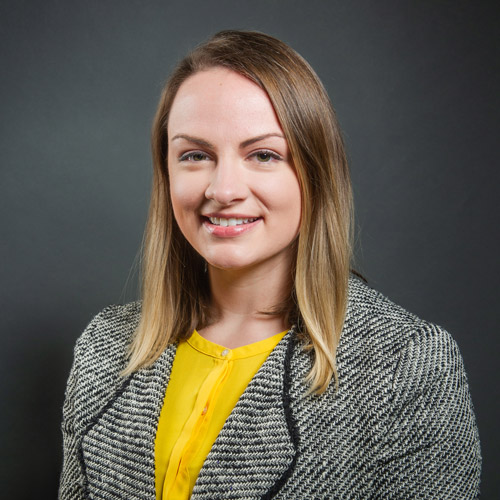Orbiting NASA Instrument to Examine Boston’s Carbon Emissions, Plant Life
BU, Harvard team will validate data from ground locations, including the CAS roof

NASA has launched its latest mission, OCO-3, which will observe greenhouse gas emissions and plant activity in Boston and other locations around the world. Boston University researchers will help validate OCO-3’s data using a custom-built ground sensor. Photo credit: Google Earth
The International Space Station has picked up a new hitchhiker—the Orbiting Carbon Observatory 3. On May 4, NASA launched its latest mission, catapulting an instrument capable of monitoring global carbon dioxide emissions toward the space station, where it has latched on to catch a ride around Earth for the next three years. In addition to carbon dioxide, the observatory, known as OCO-3, will measure the activity of Earth’s plants, which feed on emissions and play a huge role in CO2 cycling.
Much closer to home, researchers in Boston have the critical job of validating the data that will be coming down from OCO-3 by comparing the measurements with those taken from the ground. To learn more about the mission, BU Today spoke with Lucy Hutyra, a BU College of Arts & Sciences associate professor of earth and environment and codirector of the BU Urban Climate Initiative, who will be leading one of the ground validation teams. Here are five interesting takeaways from the conversation.
- OCO-3 started its life as a spare instrument. The first Orbiting Carbon Observatory, OCO-1, crashed during launch in 2009, Hutyra says. It was such a setback that NASA decided to build two OCOs, and keep one a spare as backup, when they prepared to launch OCO-2. In 2014, OCO-2 launched successfully, and since then, has been orbiting Earth on its own. As it passes around our planet once a day, it observes the whole Earth. In contrast, OCO-3, which is hitched to the ISS, is nimble and can be pointed at most any location on Earth. The ISS orbits Earth every 90 minutes, allowing OCO-3 to be fantastically responsive.
- Cities—and volcanoes—will be of particular interest. Hutyra says understanding large emission sources is key. Although volcanoes emit carbon dioxide only episodically while cities emit CO2 constantly, together they are the top two biggest carbon producers on the planet. Since OCO-3 can point and look at specific locations of interest, Hutyra says it will be able to map “wall to wall” what’s happening in terms of CO2 emissions and plant activity in the biggest cities. Boston is a specific target for observation, and Hutyra will partner with Steve Wofsy, a Harvard University professor of atmospheric and environmental science, to provide validation data for the Boston region, as OCO-3 peers down on us from space.
- The BU team will build a ground-based sensor to measure plant activity. Hutyra’s lab, which has been measuring vegetation in Boston for several years, will build a device—which Hutyra says will be about the size of “a small cooler you would take to the beach”—that will specifically be used to compare vegetation readings with those coming from OCO-3. She says the device will monitor the region’s vegetation by measuring solar-induced fluorescence, which is a tiny amount of solar energy that is given off as fluorescence—instead of being used for photosynthesis—when it hits the surface of plants. “That fluorescence is a signature,” she says. Meanwhile, at Harvard, Wofsy’s team will look up through the atmosphere to take ground readings of CO2, which will be compared to OCO-3’s readings from space.
- After spending some time on the CAS roof, BU’s device will travel around. The first place that Hutyra’s team will test and deploy their device will be on the CAS roof. “If you have binoculars, you can already see our wind chime setup on the roof, where we are measuring rainfall” for a different project, she says. “That’s where this device will go first.” Then, the device will visit the Harvard Forest, about 100 kilometers west of Boston, Hutyra says. Finally, it will spend most of its time in a location in Arlington, Mass., “because there’s a large expanse of urban forest to look across and a communications tower for [the device to be placed on] up high to see” the foliage.
- City plants are not the same as country plants. Hutyra’s lab has been working for a long time to develop accurate ways of measuring greenhouse gas emissions from the ground in Boston. One of the things she has to factor in is plant biology. “Cities, you think of them as a concrete jungle, but there’s a heck of a lot of plants, too,” she says. “Over 25 percent of Boston has tree canopy.” That means that in the summertime, when plants are leafed out, her greenhouse gas observations have to take into account that plants are taking up more CO2 than they would in the winter. “That’s really key to being able to understand how emissions of fossil fuels are changing over time. A plant in the city isn’t the same as a country plant. A tree grows much faster and takes up more CO2 in the city than its country brother.” By validating OCO-3’s vegetation measurements, Hutyra’s team will help make sure that OCO-3 is accurately reading plant activity from other urban hubs in the United States and around the world.
Kat J. McAlpine can be reached at katjmcal@bu.edu.

Comments & Discussion
Boston University moderates comments to facilitate an informed, substantive, civil conversation. Abusive, profane, self-promotional, misleading, incoherent or off-topic comments will be rejected. Moderators are staffed during regular business hours (EST) and can only accept comments written in English. Statistics or facts must include a citation or a link to the citation.